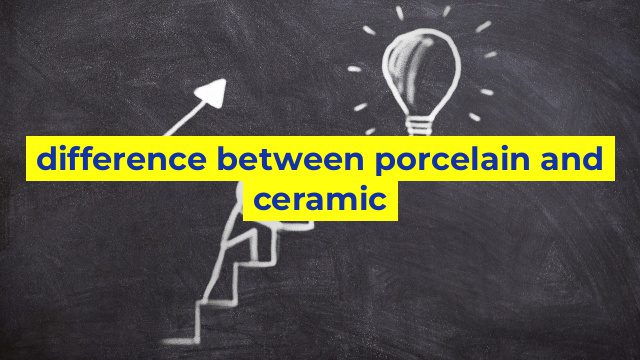Understanding the Difference Between Porcelain and Ceramic
Introduction
Porcelain and ceramic are two common building materials that have been used for centuries to create a range of applications such as tiles, sinks, toilets, and pottery. While both materials may look similar, there are some differences between the two that are worth understanding before deciding which one to use.
Difference in Composition
Porcelain and ceramic are made of different materials. Porcelain is made of kaolin, feldspar, and quartz, which are all finely ground to create a clay-like substance. Ceramic, on the other hand, is made of clay and other natural materials like sand, quartz, and feldspar.
Difference in Density
Porcelain is much denser than ceramic, which makes it more durable and less porous. Porcelain has a water absorption rate of less than 0.5%, which makes it suitable for high-traffic areas and places that are exposed to water. Ceramic, on the other hand, has a water absorption rate of up to 3%, which makes it less suitable for areas that are exposed to water.
Difference in Appearance
Porcelain and ceramic can both be glazed to create a range of finishes and colors. Ceramic tiles are usually glazed to create a shiny, smooth finish, while porcelain tiles can be glazed to create a variety of finishes, including matte, polished, and textured. Porcelain also has a whiter and more uniform color than ceramic.
Difference in Cost
Porcelain is generally more expensive than ceramic. The higher cost is due to the fact that porcelain is denser and requires more labor and energy to manufacture. However, porcelain is also more durable and long-lasting, which can offset its higher cost over time.
Conclusion
Whether you choose porcelain or ceramic will depend on your specific needs and preferences. Porcelain is a better choice if you need a more durable and water-resistant material for high-traffic areas, while ceramic may be a better choice if you are looking for a more affordable option with a glossy finish. By understanding the differences between the two materials, you can make an informed decision that will meet your needs and budget.
Table difference between porcelain and ceramic
Porcelain vs Ceramic Table
| Property | Porcelain | Ceramic |
|---|---|---|
| Material Composition | Highly refined and pure clay | Mix of various natural clays |
| Strength | Stronger and more durable | Less strong and more susceptible to breaking and chipping |
| Water Absorption Rate | Less than 0.5% | More than 0.5% |
| Finish | Translucent and shiny | Matt or glazed finish |
| Maintenance | Easier to clean and maintain | Requires more effort to clean and maintain |
| Uses | Ideal for food service and high traffic areas | Popular for decorative purposes |


